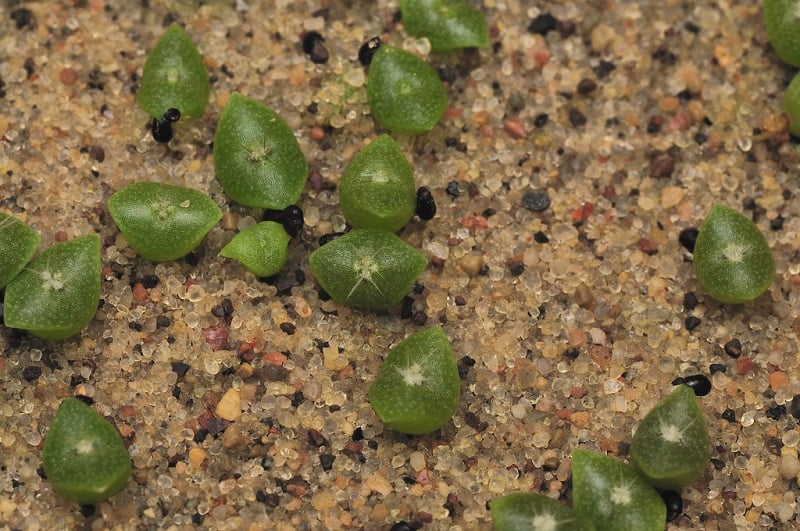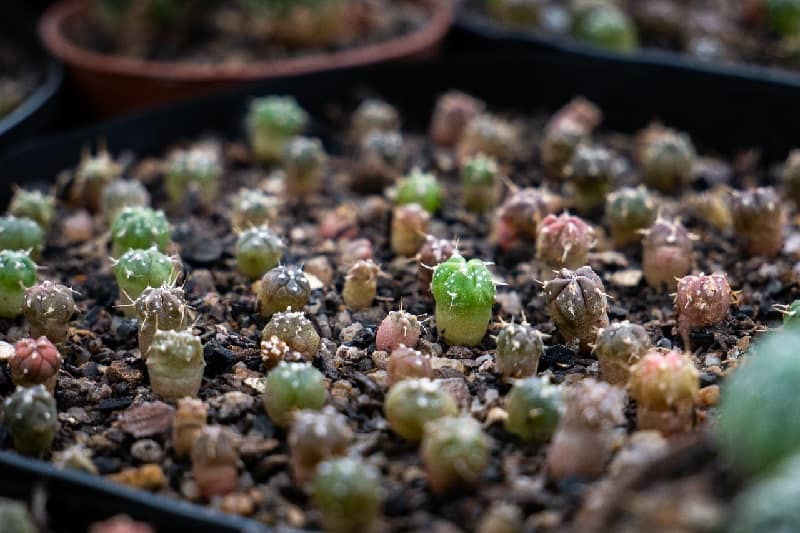Step-By-Step Cactus Seed Growing: Master the Process!
Many cactus enthusiasts now prefer growing cactus from their own seeds to witness the plant’s complete development until its first flowering. This method not only allows for observing the entire growth process but also offers the possibility of obtaining rare and valuable varieties. In this article, we provide essential tips for germinating cactus seeds and nurturing the seedlings, enabling you to create beautiful varieties and appreciate the natural cycle of cacti without relying on specialized nurseries.

Contents
Do Cacti Have Seeds?
Cacti, these fascinating plants, are becoming increasingly popular in our country. However, even experienced growers might be unsure about whether cacti have seeds and how they appear, as these plants mostly multiply through vegetative means.
Fortunately, you can now find a variety of cactus seeds in specialized stores. If you’re interested in growing cacti from seeds, it’s important to note that the process takes time but is quite captivating. Beginners in indoor gardening often choose seeds of double-formed, fast-growing cacti that bloom after several years. They might even opt for a mixture of seeds from different varieties.
To avoid disappointment in the future, it’s crucial to understand the different types of cacti and recognize what the seeds should look like. Many beginners attempting seed propagation for the first time fail to achieve the desired outcome. You can see an example of what cactus seeds look like in the photo below.

How to Grow a Cactus from Seed
If you wish to grow cacti from seeds, you can collect seeds from plants in your own collection. To ensure successful pollination, you’ll need two cacti grown from seeds or cuttings obtained from different plants. Look for fully opened flowers to gather pollen easily using a brush. Transfer the collected pollen from one flower to another. Over time, you’ll notice a berry replacing the flower.
To propagate cactus seeds, it’s important to use fully ripe berries. Handle them with care and delicately extract the seeds. Store them in a paper bag, writing down the variety name and the date of seed collection. You can safely keep the seeds in the bag for up to two years.

How To Germinate Cactus Seeds
When growing cactus from seeds, it’s important to choose a variety or species that doesn’t easily mutate and retains its unique traits. Before you start planting cactus seeds, it’s crucial to learn the basic guidelines.
Cactus seeds have a slow germination process, and the seedlings develop at a slow pace too. While germination requires warmth and moisture, it’s important to prevent fungal diseases that can affect the delicate seedlings. Maintain a specific temperature and humidity when sowing to minimize the risk of fungal growth.
Soak the seeds in a weak solution of potassium permanganate for a day to awaken them and remove any remaining pulp. Avoid using growth stimulants as their impact on cacti is not fully understood.

Open the seed packets over a paper surface to safeguard the tiny seeds, which are easily mistaken for dust. Soaking the seeds not only initiates their growth but also reduces the chance of mold in the soil, creating a healthy environment for cactus seedlings.
To ensure successful germination, maintain an air temperature between 79 to 86°F during the day, reducing it by eighteen degrees at night.
Cactus seeds can be sown in wide, low containers that have been washed with very hot water (not boiling). Place a clay shard over the container’s drainage opening, followed by a layer of expanded clay or small pebbles treated with boiling water for proper drainage.
Fill the germination containers with a loose mixture of cactus soil, preferably containing perlite or coarse sand. Many experienced growers recommend sterilizing the soil in the oven or microwave to minimize fungal diseases.
Cover the soil mixture with a half-inch layer of gravel, broken bricks, or coarse-grained sand. Ensure that the material has been sieved to a grain size of 2mm, washed to remove small particles, dried, and spread over the soil surface. This layer will act as a barrier against disease-causing pathogens.
How To Plant Cactus Seeds

Evenly spread the cactus seeds across the surface of the prepared container. Fold a sheet of paper in half, pour the seeds into the crease, and gently tap the paper at a slight angle to distribute the seeds evenly over the soil.
Since cacti grow slowly, sow the seeds densely. After sowing, press them lightly into the soil using a smooth object. As the seeds require light to germinate, there’s no need to cover them with soil. Avoid watering the soil and instead, use a spray bottle to mist it.
Cover the container with glass and place it in an area with artificial heating. The soil should warm up to 86°F during the day and 68°F at night.
Pricking Out Cactus Seedlings
Once the seedlings in the container form a thick cluster, they should be transplanted into fresh soil. Ensure that the original soil is dry, allowing it to crumble easily for easy removal of the seedlings without causing damage. Transfer the young cacti, which have grown up to one inch in diameter, into larger containers.

After transplanting, keep the seedlings in a warm, shaded spot. Water them gently a few days after the transplant. Experienced growers recommend watering the cacti when the soil dries out.
Approximately a week later, when the seedlings have acclimated to the new soil, move them to a slightly shaded, yet well-lit area. This will promote faster growth and development of the plants.
Caring for Cactus Seedlings
Knowing how to prepare and sow cactus seeds is important, but equally crucial is understanding their care requirements.
Proper watering is the first step for caring for cacti. Determine when and how often to water the young plants to prevent damage. Instead of immersing the container in water, as previously recommended, spray bottles can be used once a day to moisten the soil.
